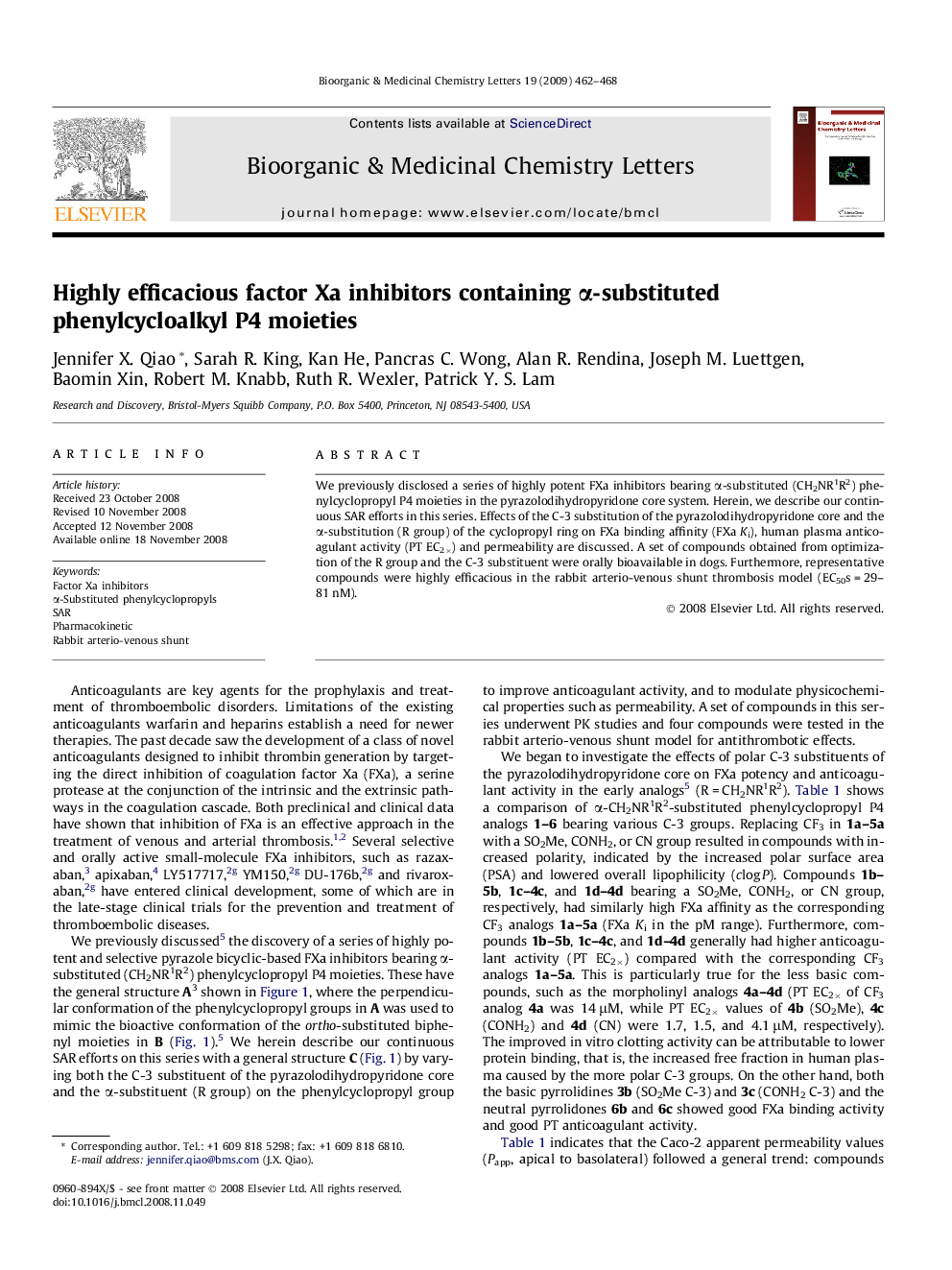| Article ID | Journal | Published Year | Pages | File Type |
|---|---|---|---|---|
| 1375876 | Bioorganic & Medicinal Chemistry Letters | 2009 | 7 Pages |
We previously disclosed a series of highly potent FXa inhibitors bearing α-substituted (CH2NR1R2) phenylcyclopropyl P4 moieties in the pyrazolodihydropyridone core system. Herein, we describe our continuous SAR efforts in this series. Effects of the C-3 substitution of the pyrazolodihydropyridone core and the α-substitution (R group) of the cyclopropyl ring on FXa binding affinity (FXa Ki), human plasma anticoagulant activity (PT EC2×) and permeability are discussed. A set of compounds obtained from optimization of the R group and the C-3 substituent were orally bioavailable in dogs. Furthermore, representative compounds were highly efficacious in the rabbit arterio-venous shunt thrombosis model (EC50s = 29–81 nM).
Graphical abstractWe previously disclosed a series of highly potent FXa inhibitors bearing α-substituted (CH2NR1R2) phenylcyclopropyl P4 moieties in the pyrazolodihydropyridone core system. Herein, we describe our continuous SAR efforts in this series. Effects of the C-3 substitution of the pyrazolodihydropyridone core and the α-substitution (R group) of the cyclopropyl ring on FXa binding affinity (FXa Ki), human plasma anticoagulant activity (PT EC2×) and permeability are discussed. A set of compounds obtained from optimization of the R group and the C-3 substituent were orally bioavailable in dogs. Furthermore, representative compounds were highly efficacious in the rabbit arterio-venous shunt thrombosis model (EC50s = 29–81 nM).Figure optionsDownload full-size imageDownload as PowerPoint slide
